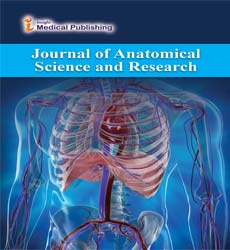Brief Note on Endometrium
Atenello Statin*
Department of Biological Science, University of RSA, Kimberley, SouthAfrica
- *Corresponding Author:
- Atenello Statin
Department of Biological Science,
University of RSA,
Kimberley,
SouthAfrica,
Tel: +27 (0) 798735393;
Email: statinbioA@se
Received Date: August 30, 2021; Accepted Date: September 13, 2021; Published Date: September 20, 2021
Citation: Statin A (2021) Brief Note on Endometrim. J Anat Sci Res Vol. 4 No.4:e002.
Editorial Note
The endometrium, which is located in the lining of the uterus, is a composite structure containing a single epithelial layer overlying a mesenchymal stroma. Cyclic growth of the endometrium under the impact of ovarian steroids results in the formation of a receptive endometrium. If establishment fails, or is intentionally prevented by the use of fertility regulation, the endometrium is shed by the progression of menstruation. This exclusive system of cyclic tissue regeneration is depending on the cyclical growth and regression of the blood vessels that supply the endometrium. Minute attention has been paid to this vital feature of human reproduction but it now seems that many disorders that diminish the quality of life of modern women, such as heavy menstruation, endometriosis, breakthrough bleeding and infertility, might have their basis in disorders of the endometrial vasculature. The human endometrium endures cyclic deviations including proliferation, differentiation, tissue breakdown, and shedding (menstruation) during a woman's reproductive life. The postovulatory rise in ovarian progesterone originate profound remodeling and differentiation of the estradiol-primed endometrium. This modification, termed decidualization, is critical for embryo implantation and maintenance of the pregnancy. Initiation and crosstalk of cAMP-and progesterone-mediated signaling paths have emerged as key cellular events to drive integrated changes at both the transcriptome and the proteome levels. This results in the initiation and maintenance of the decidual phenotype and function. After detachment of the functional layer of the separated endometrium that follows progesterone removal, i.e., menstruation, the basal layer of the endometrium, under the impact of estradiol, regrows and initiates a exclusive form of angiogenesis and regenerates a new functional layer. The molecular and cellular mechanisms for this procedure remain elusive, mainly because of complications in reproducing menstrual tissue breakdown, shedding, and subsequent tissue regeneration in vitro. Almost all hormonal dysregulations (that is, endocrinopathies) and biological diseases of the endometrium produce abnormal uterine bleeding. Clinically, the cause of the bleeding frequently remains unclear. The endometrial tissue is a tactful target for steroid sex hormones and is capable to change its structural features with rapidity and flexibility. Oral contraceptives apply a predominant progestational effect on the endometriun, persuading an arrest of glandular proliferation, pseudosecretion, and stromal edema followed by decidualized stroma with granulocytes and thin sinusoidal blood vessels. Prolonged use results in advanced endometrial atrophy. Hormone replacement analysis with estrogen alone may result in uninterrupted endometrial proliferation, hyperplasia, and neoplasia. The usage of both estrogen and progesterone causes a wide variety of histologic patterns, seen in various combinations: proliferative and secretory variations, frequently mixed in the same tissue sample; glandular hyperplasia (in polyps or diffuse) ranging from simple to composite atypical; stromal hyperplasia and/or decidual transformation; epithelial metaplasia (eosinophilic, ciliated, mucinous); and inactive and atrophic endometrium Progesterone therapy for endometrial hyperplasia and neoplasia persuades glandular secretory variations, decidual reaction, and curved arterioles. Glandular proliferation is typically arrested, but neoplastic alterations may persist and exist with secretory alterations. Lupron therapy produces a narrowing of uterine leiomyomas by accelerating their hyaline degeneration, similar to that in postmenopausal involution. It commonly produces endometrial atrophy.
Open Access Journals
- Aquaculture & Veterinary Science
- Chemistry & Chemical Sciences
- Clinical Sciences
- Engineering
- General Science
- Genetics & Molecular Biology
- Health Care & Nursing
- Immunology & Microbiology
- Materials Science
- Mathematics & Physics
- Medical Sciences
- Neurology & Psychiatry
- Oncology & Cancer Science
- Pharmaceutical Sciences
